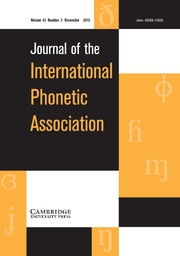Articulatory studies have revealed cross-linguistic variation in the realization of cross-word nasal+stop sequences. Whereas languages such as Italian and Spanish show largely categorical regressive place assimilation (Kochetov & Colantoni 2011, Celata et al. 2013), English and German alveolar nasals are often characterized by gradient assimilation, modulated by the degree of overlap with the following gesture (Barry 1991, Ellis & Hardcastle 2002, Jaeger & Hoole 2011). The lack of comparable instrumental studies for French may be due to the common assumption that the language lacks nasal place assimilation in general. We investigate here the production of French /n/+/k ɡ/ sequences via electropalatography. Four female speakers of European and Quebecois French wearing custom 62-electrode acrylic palates read the sentences C'est une bonne casquette ‘That's a good cap’ and C'est une bonne galette‘That's a good tart/cookie’ alongside comparable control sentences involving /n/+/t d/ sequences. For each sequence, assimilation type was determined both qualitatively via visual inspection of the linguopalatal profiles and quantitatively using two contact indices. None of the /n/-tokens exhibited either categorical assimilation (i.e. [ŋk]) or lack of assimilation (i.e. [n(ə)k]). Rather, an intermediate pattern was attested with the nasal involving overlapped coronal and velar gestures ([nn͡ŋ]) and continuous retraction of the constriction. The degree of overlap varied among speakers, extending up to half of the nasal interval. Overall, these French patterns are strikingly different from the categorical processes reported for other Romance languages, yet similar to the gradient assimilation attested in Germanic languages. We conclude by discussing possible sources of these differences.
Publication Type
- Article



